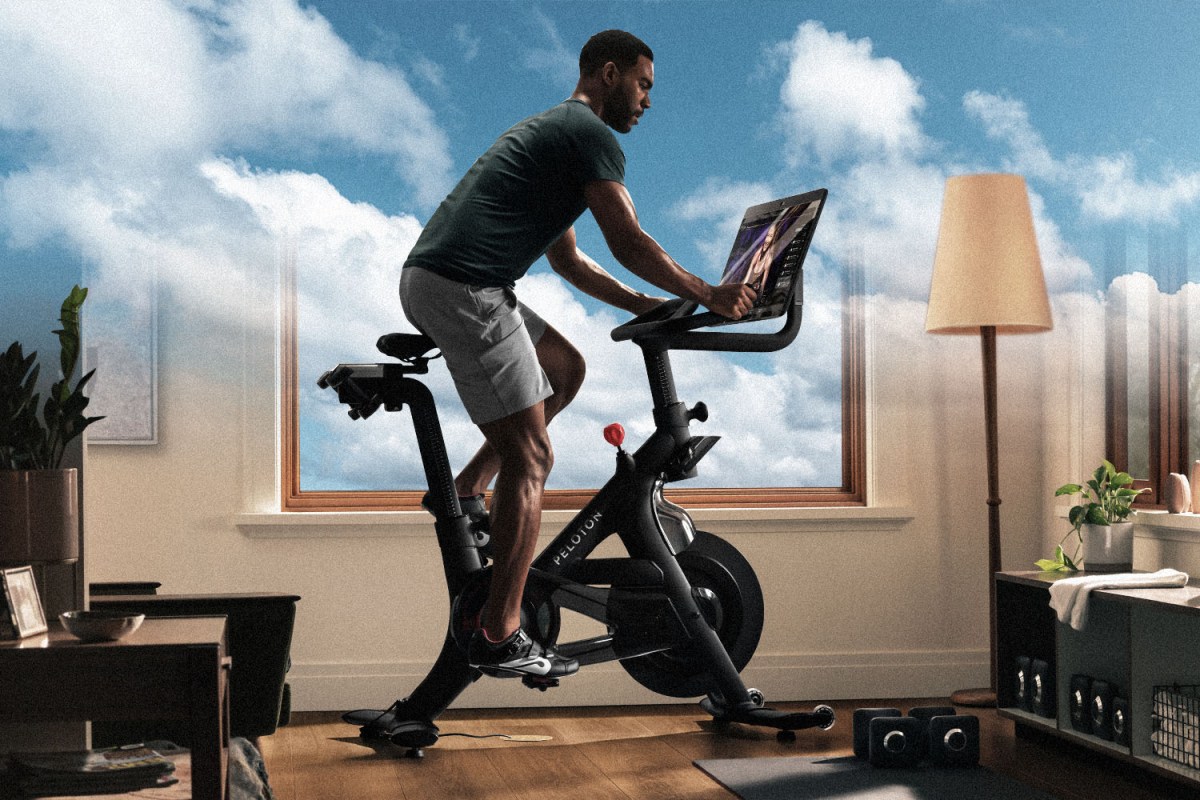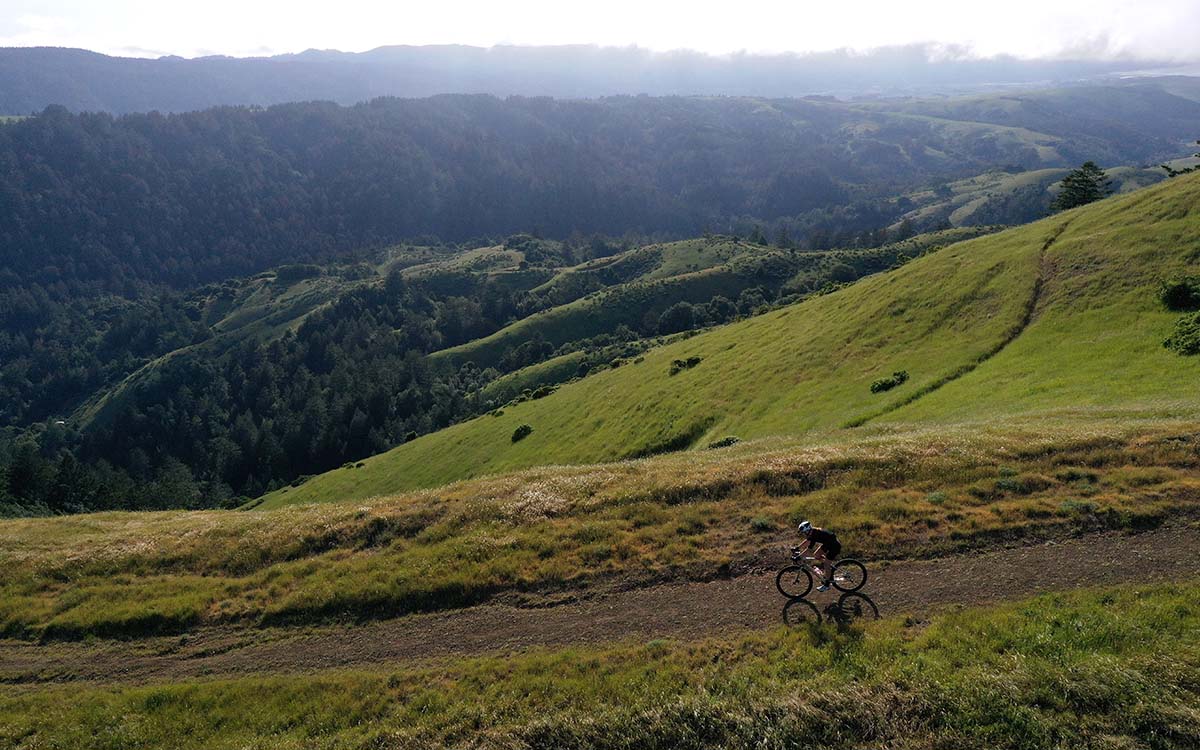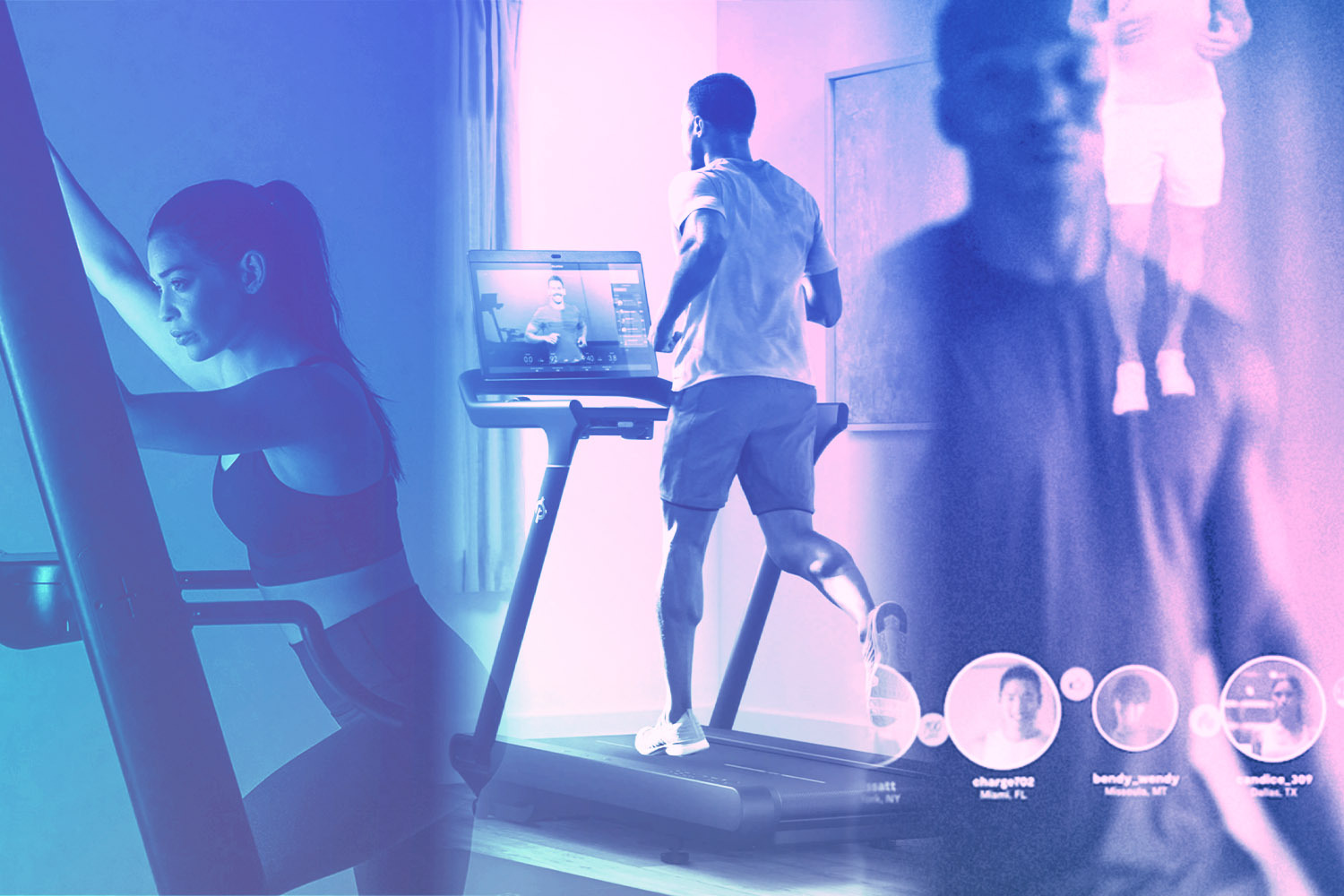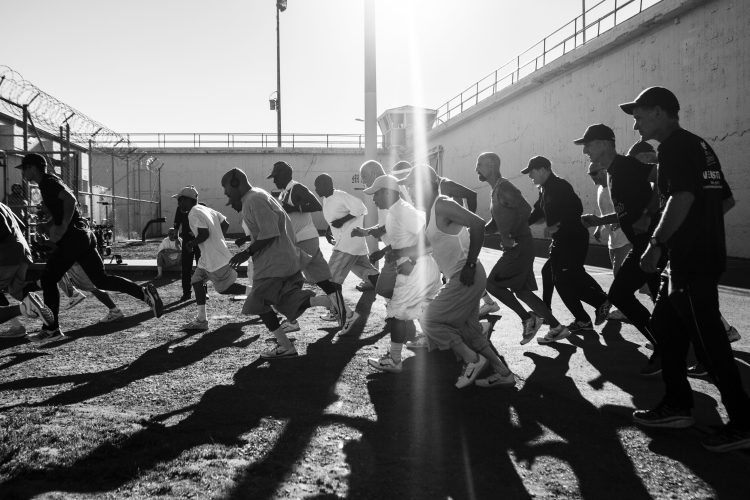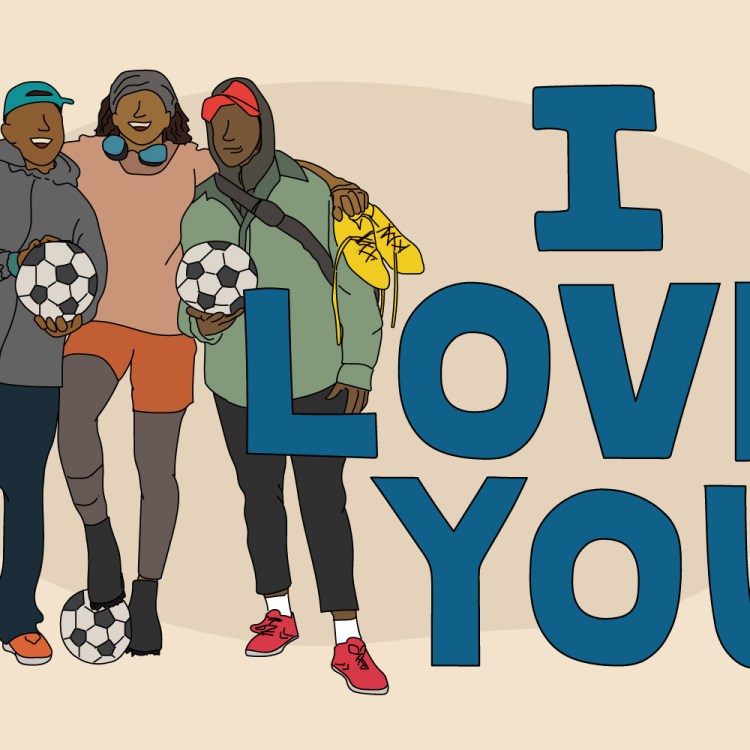Earlier this year, Peloton had to invest $100 million to fix its preposterous shipping delays. Around Thanksgiving 2020, the company was already warning customers of back-orders stretching to this upcoming July.
In other words, Peloton’s been doing a little too well. That predicament is a testament to the bike’s well-earned ubiquity. During the pandemic, Peloton logged a 233% increase in sales and bolstered its online platform by millions.
Peloton’s rise to the top of the home-workout-apparatus heap is pretty clearly intertwined with the pandemic; it feels unlikely, even as quarantines end, that people will just let their $2,000 wonder machines collect dust. That said, it’s natural that some may start to wonder how all the cardio capital they’ve collected on a stationary bike would translate to the open road.
For so many, this spring and summer will be the first welcome weather they’ve experienced since owning their Peloton. What if they want to take a traditional road cycle out for a spin? What should beginners know before making that leap? How is the workout similar to a Peloton session? What external considerations come into play?
Below, find a handy guide for those eager for a side of fresh air with their cycling workouts this summer. From gear basics to recreating HIIT sessions to limiting soreness in the back, here’s what you need to know.
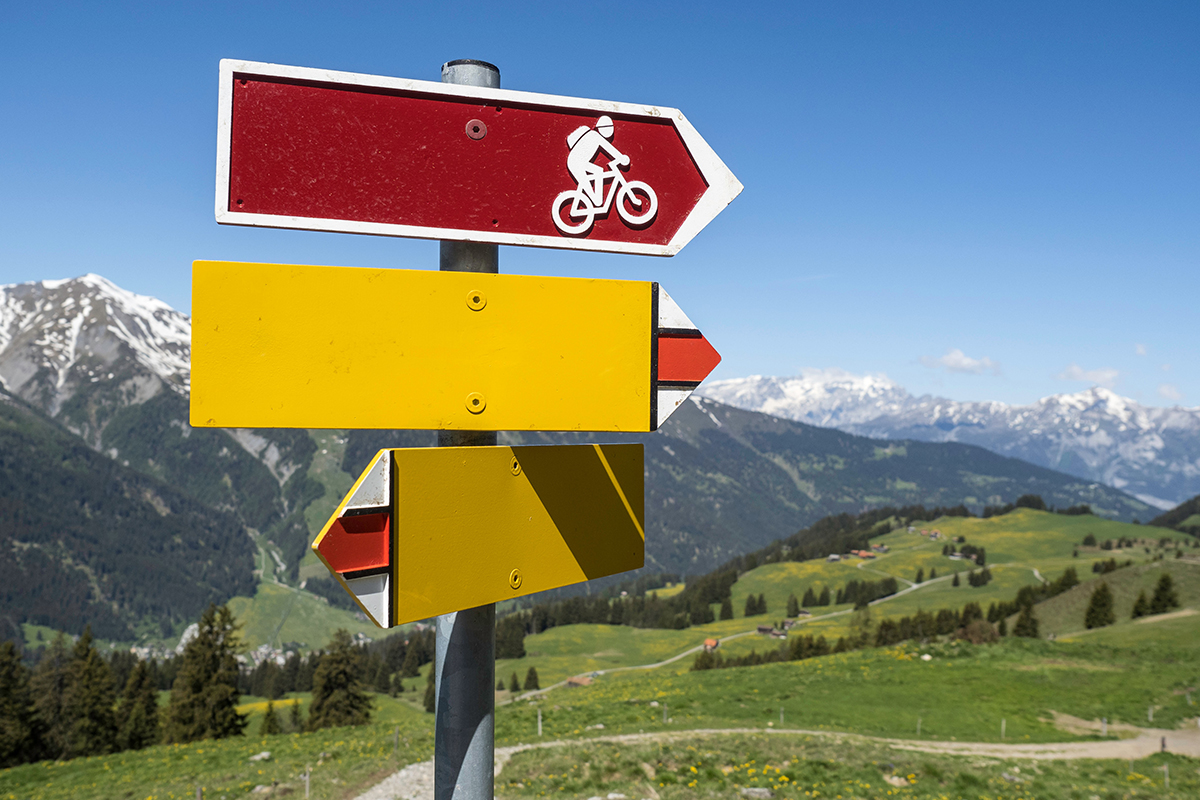
The Environment
Peloton’s most passionate supporters often gush about the bike’s “convenience”: it’s the perfect workout-from-home alternative, it offers quick-sweat sessions, its workout library is always expanding. They’re not wrong. The whole operation is extremely convenient. But the real reason they love riding their Peloton so much? It’s predictable.
Every day, at the same exact time, no matter the weather, they can sign in, strap in and start a class with their favorite instructor (someone, mind you, who they may have developed some serious affection for during quarantine). However long the ensuing session is — anywhere from 10 minutes to an hour — nothing ever really goes wrong. Peloton riders can follow a trainer’s instructions exactly, go rogue and try to beat the entire leaderboard or even space out and forget they’re on the bike at all. When it’s over, they’re still in their homes, not far from the shower and able to move on with their days.
It’s a little different when cycling on roads or trails. A number of things we may take for granted while riding a fancy stationary bike can easily derail a workout — and possibly put you in harm’s way. Consider: wind resistance, hills that you can’t just erase by turning a red knob to the left, or the fact that your town or city’s most “rideable” paths will likely not be too close to your house. You’ll likely have to navigate a patchwork of semi-protected lanes and sidewalks before getting to where you’d like to be.
There’s no such thing as spacing out in outdoor cycling. You may find yourself in the zone, sure, but in order to share the roads with distracted drivers and ever-bigger cars, you have to stay alert at all times. We ended the last decade with some of the deadliest years for cyclists on record. The pandemic only wrought more accidents. This is a big reason why Peloton’s biggest brand calling card — its deep playlists — can’t be replicated during road cycling. The pumpy tunes that most credit with powering them through workouts shouldn’t be in your ears while riding outside, unless you’re, say, gravel biking on a secluded trail.
Does this mean outdoor cycling is less fun than sitting on a Peloton? For some people, of course. But keep in mind, all those extraneous challenges can deliver a much-needed shock of adrenaline to the system. They can take you out of your day (not to mention your literal home), in a way that a predictable Peloton ride cannot.
The Equipment
There are just two types of Peloton bikes: the original model and a new one with a swiveling screen. (The brand doubled down on all its other workout options, like yoga and strength training, to keep pace with connected fitness machines like Mirror and Tonal.) But there are thousands of outdoor bikes, with more than 150 brands represented in America alone. It’s important to remember that not all of these bikes are designed explicitly for the purpose of getting you in shape, and not all of them have the same QA of a company that brought in almost $2 billion in revenue last year.
In fact, as bikes generally have a habit of getting handed down, and the supply chain for bike parts has been backed up in China since the beginning of quarantine — leading to a so-called “bike shortage” across the United States — it’s easy to head out there on a bipedal that’s either seen better days or just doesn’t make sense for you. The best way to avoid that? Head to your local bike shop and talk to the experts about what exactly you’re trying to achieve with your bike. Hint: you’re probably in the market for a road racer, a hybrid or a gravel bike depending on exactly what sort of surfaces you’re planning to ride.
Once you bring home a reliable steed, there a few crucial differences to stationary riding, which you’d do well to keep in mind. For starters, as Von Collins, a triathlete expert at Complete Tri points out, don’t be surprised when the new position feels strange. “No doubt, the fit and posture of your Peloton is going to be a little different than that of your road bike, mountain bike or other cycle. Give yourself a few rides to get used to the new position. Your hips, back, shoulders and arms will all likely be sore.”
It’s also wise to have an elementary understanding of how to deal with changes in elevation. Resistance is theoretical on the Peloton, but in real life, certain gradients can feel physically impossible to summit when you don’t know what you’re doing. Practice switching gears on level ground before encountering any steep hills — the idea is to be in the lightest, jumpiest gear when climbing by combining the smallest front chainring size with the largest rear sprocket. When moving downhill, or just fast down an even road, you want to be in a “big gear.” Bikes that have more gears (like 30-speed bikes) are not faster bikes, they’re just able to address more situations a cyclist encounters.
While every cyclist needs a helmet and most wear sunglasses too (glare and flies are a brutal combo in the summer), long-distance cyclists also need have a working knowledge of how to fix their bikes. They ride around with tools, like portable pumps and tire levers, in order to tag in and make repairs when necessary. It’s a bit more involved than the Allen wrench that Peloton provides in a plastic baggie.
The Workout
Peloton rides are serious business. Any time I start a 15-minute HIIT session with Alex Toussaint or Hannah Corbin, I know they’re going to put me on my ass. But do the platform’s popular workouts translate to outdoor cycling? It isn’t a clear, one-to-one match. For starters, real-world cycling often runs way longer — a 20-mile ride can easily take up two hours of your day. That requires a level of cardio that Peloton does make a point accommodate, with various “Power Endurance” rides from 75-90 minutes long, but it’s telling that the majority of those offerings were recorded at the brand’s studio in 2019. Clearly, the Peloton faithful have a preference for the quick-hit, Tabata-esque sessions.
Why? Well, you can go really freaking fast. Driving the cadence up to 120 rpm is exhilarating. And it’s why a lot of Peloton-to-road converts may think they’re biking tremendously slow. Garret Seacat, the Head Coach at Absolute Endurance says, “You should be prepared to see a drastic change in the ‘speed’ you are doing outdoors vs indoors. That’s due to aerodynamic drag and wind speeds, which no indoor bike can account properly for (yet).”
That said, while it may feel like less of a workout — or, at least, you might feel less impressed with the work you’re putting in — outdoor cycling is its own beast. As Seacat points out: “Most cyclists can produce an additional two to 10% more power outdoors compared to what they were doing inside.” Plus, the activity engages the muscles in different ways. Peloton instructors constantly have to remind their trainees to engage the core in order to prevent them from putting too much load on the back. But with a road bike, the core and glutes are constantly flexing; work needs to be done to keep the bike upright, especially when we encounter a rough section of road.
A professional cyclist isn’t going to train for the Tour de France with a Peloton anytime soon, but for casual, get-me-in-shape purposes, a winter of stationary cycling has likely gotten your glutes to the right place. They can handle the digressive elevations and terrain of your town. It’s similar to running; neither my legs or heart are quite ready for an eight-miler after months of only running 800s at the track, but the base strength is there.
On the flip side, if you’re keen to start cycling outside but don’t want to immediately carve out four hours of your weekend, try to recreate Peloton-style workouts. Patrician Johnson, an avid cyclist, recommends taking HIIT to an isolated biking trail. “Find somewhere you won’t have to stop and go because of traffic. Alternate between bursts of pedaling as fast as you can with keeping the pace slow and steady. Think: one-minute all out, then five minutes at a moderate pace.” For low-impact (a Peloton style that keeps you in the saddle for 30 minutes at a time), she says to seek out a flat, five-mile stretch. Push workouts can be had in hilly areas — they’ll punish the glutes on par with some of your best indoor classes.
Biking on the road and biking in your living room are obviously different in a number of ways. The former means exercising without a playlist called “Best ’90s Bops,” learning words like sprocket and, at times, playing Frogger with all sorts of pedestrian and vehicular traffic. But after a year of working out inside, it’ll give your body and brain the change of pace and scenery they deserve while opening you up to all sorts of travel experiences. From the the States to Canada to Ireland, a number of nations have kept busy opening bucket-list-worthy biking trails over the last few years. Get out there, see something new and sweat a bit while you’re at it. Your Peloton will be waiting when you get back.
Whether you’re looking to get into shape, or just get out of a funk, The Charge has got you covered. Sign up for our new wellness newsletter today.
